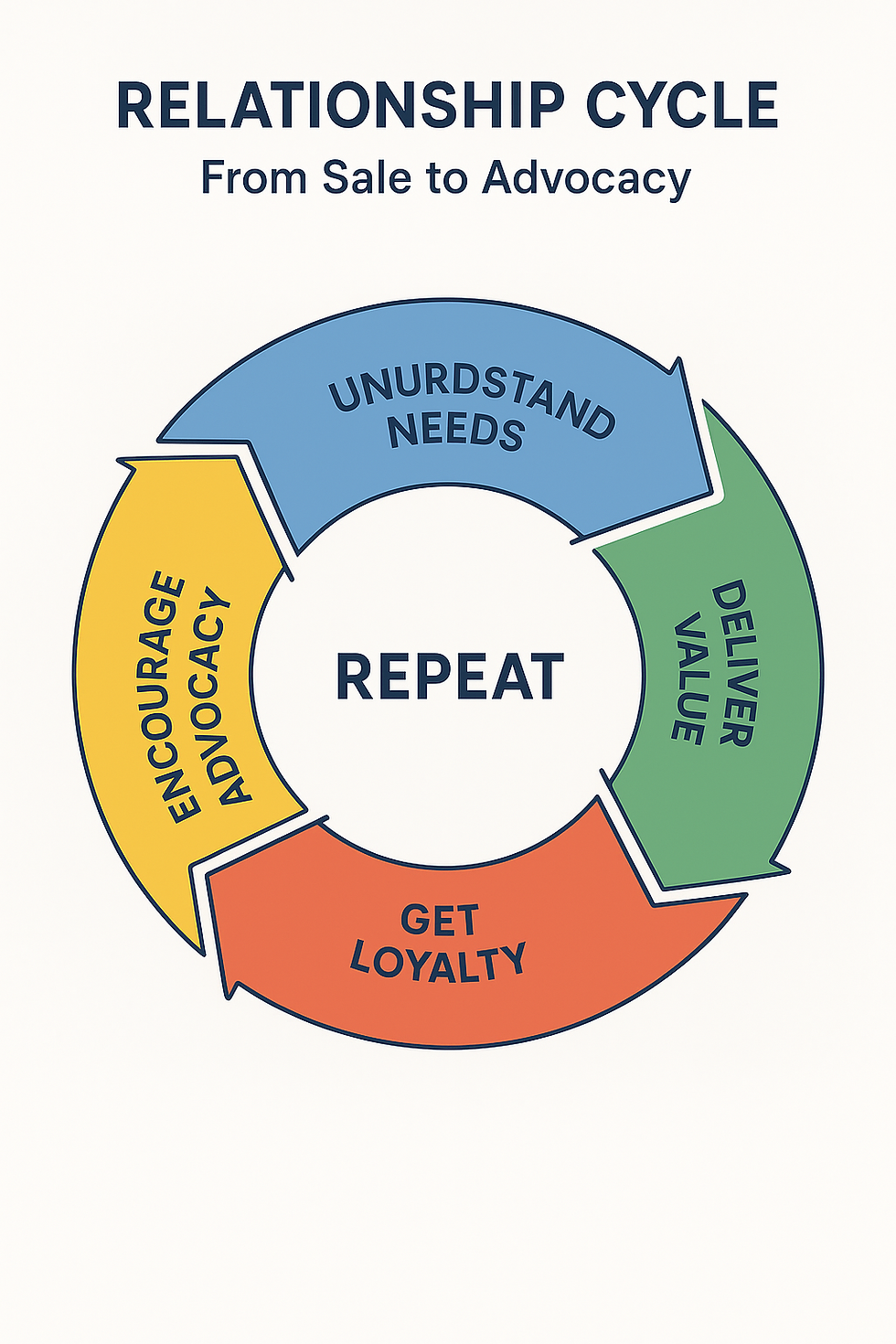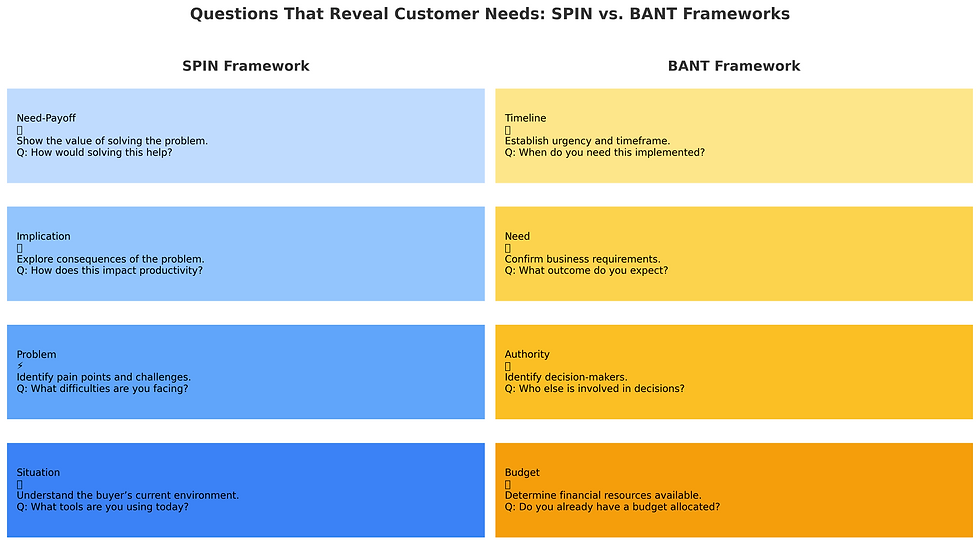Know Your Customer's Needs: The Key to Effective Selling
- ClickInsights

- Sep 14
- 6 min read
Introduction
Most sales conversations indeed collapse not because the product is poor, but because the seller just never took the time to understand the customer's needs. Consumers nowadays are more conscious, discriminating, and demanding than ever. They no longer want a one-size-fits-all pitch. Instead, they expect that sellers would listen, understand, and provide personalized solutions according to their very specific requirements. When a salesperson skips this step, they end up not connecting and losing the deal.
The key to successful selling lies in psychology and empathy. Sales psychology and psychology of the buyer give us valuable information about how people make decisions, why they act the way they do, and what really motivates them to buy. By understanding these factors, you can shift your approach from driving features to providing useful outcomes that are what your buyer is actually interested in. In this article, we will examine how customer needs are the secret to sales success, how psychology influences buying behavior, and the practical steps through which you can discover and satisfy those needs.

Why customer needs matter
When you're prospect-centric, you reverse the whole dynamic of the sales conversation. Instead of lecturing your prospect, you're engaging in a conversation that establishes credibility and trust. This is what yields higher conversion rates, because shoppers know you care about solving their problems, not about making a sale. This also shortens sales cycles, since addressing the actual issue initially bypasses objections and procrastination.
Needs-based selling also builds long-term relationships. Customers who believe they are understood will be more likely to come back, renew contracts, and even suggest your services to others. On a company-wide level, needs-based selling reveals valuable information that can enhance product development and marketing efforts. Overall, the key to knowing customer needs is not merely to close one deal. It is to build a foundation for recurring growth and loyalty.
Approach | Focus | Example Pitch | Customer Impact |
Feature Selling | Product functions | “Our tool has automated reporting.” | Buyer hears: generic, not personalized |
Needs-Based Selling | Buyer’s problems | “Our tool saves you 6 hours/week on reports so your team can focus on strategy.” | Buyer feels: understood & valued |
The psychology of purchase choices
Buyer psychology is a very powerful force in each sales interaction. There is ongoing research that shows emotion drives choices ahead of logic. For instance, a purchaser might sense relief, status, or protection from making your product choice and then justify the decision afterwards with features or price comparison. Knowing this emotional influence provides you with the power to connect more personally with your customers.
One other psychological motivator is perceived value.
Your customers are not concerned with all the functionality your product offers. They are concerned with benefits that directly relate to them. If a product saves them time, reduces stress, or increases revenue, it will stand out. Customers use cognitive shortcuts such as social proof and loss aversion as well. Testimonials, case studies, and references from similar customers make people feel more comfortable with their decision.
On the other hand, fear of missing an opportunity normally provokes quicker action. Risk perception provides another impetus. Customers always think about what could go wrong. That is why guarantee, pilot projects, and proof-of-concept programs succeed. They reduce perceived risk and make the decision appear less intimidating.
Reminds us, today's buyers crave advice, confidence, and trust as strongly as they crave technical details. With these aspects of sales psychology in mind, you can craft discussions that appeal to both the logic and the emotional elements of decision-making.
Finding Customer Needs Effectively
Something beyond small company talk is required to determine customer requirements. You have to employ structured questioning, active listening, and company observation. Start with open-ended discovery questions. Instead of asking, "Do you need help with reporting?" ask, "What are your team's biggest pain points when it comes to reporting?" This gets the prospects to share with you specifics that reveal company motivations and pain points.
Active listening is equally important. Paraphrase what the buyer has stated in your own words to make sure that you heard them correctly. For example: "It sounds like saving time is more important to you than reducing cost. Did I get that correct?" It not only ensures clarity but also shows the buyer you value their input.
Aside from actual words, be aware of cues. Tone or pause conveys more than a direct answer. In online sales, pay attention to "digital body language." A customer repeatedly coming back to your price page or downloading comparison guides needs something different from someone surfing through your blog in passing.
Finally, using established frameworks is helpful. SPIN (Situation, Problem, Implication, and Need-payoff) and BANT (Budget, Authority, Need, Timeline) models guide you through your questioning process so that you never leave out essential areas. The Jobs-to-be-Done framework is excellent for determining the actual outcome your buyer is seeking. These processes ensure you drill down below the surface questions and learn what matters most.

Aligning your solution with customer needs
Once you have some idea of what the buyer requires, then the next step is to show very clearly how your service or product delivers them. This involves the move from a feature statement to a statement of consequences. For instance, rather than saying, "Our software reports automatically," you could say, "Our software reduces reporting time by six hours, freeing your team to focus on high-value activities." Linking benefits to measurable outcomes makes them more attractive.
Storytelling is another powerful way to get in sync with customer needs. Share the stories of clients who have had similar concerns and highlight the benefits they received from your services. Testimonials and case studies are also trust indicators as they provide evidence that your solution addresses real-life situations. Offering a trial or proof-of-concept for those waiting-to-buy consumers minimizes risk while giving them confidence.
Objections will still arise, but these should be viewed as opportunities to clarify needs. For example, if a buyer says, "The price seems too high," instead of defending your pricing, ask, "What kind of return would make this investment worthwhile for you?" This reframes the conversation around value rather than cost and demonstrates your commitment to meeting their goals.
Building long-term relationships through needs-focused selling
Effective selling doesn't end with the signed agreement. Leading salespeople view the sale as the start of a long-term relationship. Regular follow-up, result updates, and ongoing communication ensure that the buyer continues to be understood and cared for. Anticipating future needs and enthusiastically offering solutions makes you a trusted partner rather than just a supplier.
As customers continually experience value, they become loyal advocates. They will more easily provide referrals, testimonials, and repeat business. Encouraging this advocacy is as simple as sharing common success stories, showcasing customer testimonials, or offering referral incentives. It creates a cycle of trust and expansion over time that benefits both you and your customers.
Conclusion
Customer need understanding is the key to successful selling. Without it, the most innovative product or service will never ring true with buyers. Utilizing techniques of sales psychology and buying psychology allows you to uncover what actually drives decisions and couple that with
what rings as personal, relevant, and valuable. Asking good questions, listening attentively, and observing signs ensure that you are matching your solution with real pain points rather than making assumptions.
The benefits extend way past one transaction. Customers who are heard are more likely to be loyal, return for repeat business, and send business your way. It's a ripple effect of trust, word-of-mouth, and growth that cannot be duplicated with traditional sales methods. The lesson is simple: sell fewer features and focus on solving problems that are most critical to your customers. If you do this regularly, not only will you make more sales, but you will also build the kind of relationships that will help your business endure.
Call-to-Action
For anyone that wants any further guidance, ClickAcademy Asia is exactly what you need. Join our class in Singapore and enjoy up to 70% government funding. Our courses are also Skills Future Credit Claimable and UTAP, PSEA and SFEC approved. Find out more information and sign up here. (https://www.clickacademyasia.com/psychology-of-selling)



Comments